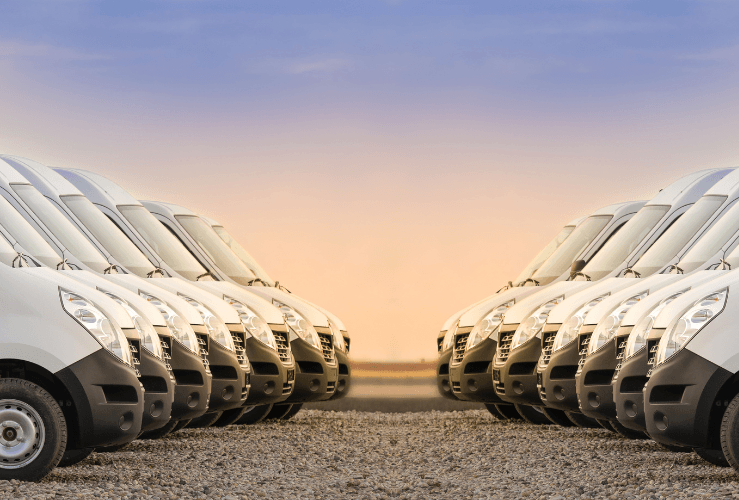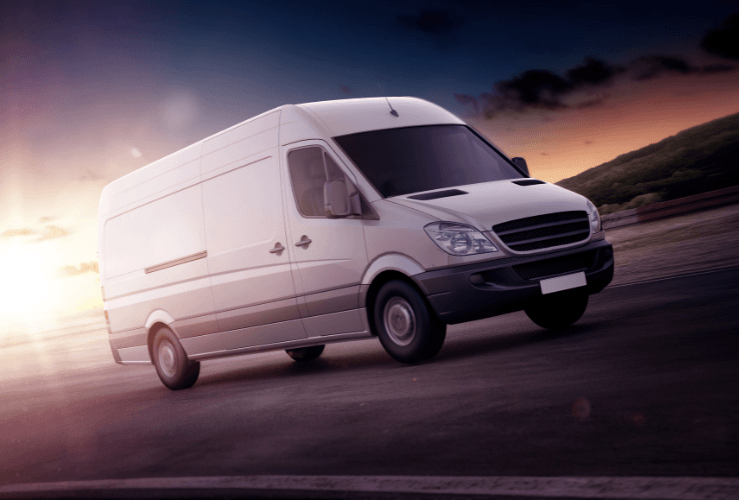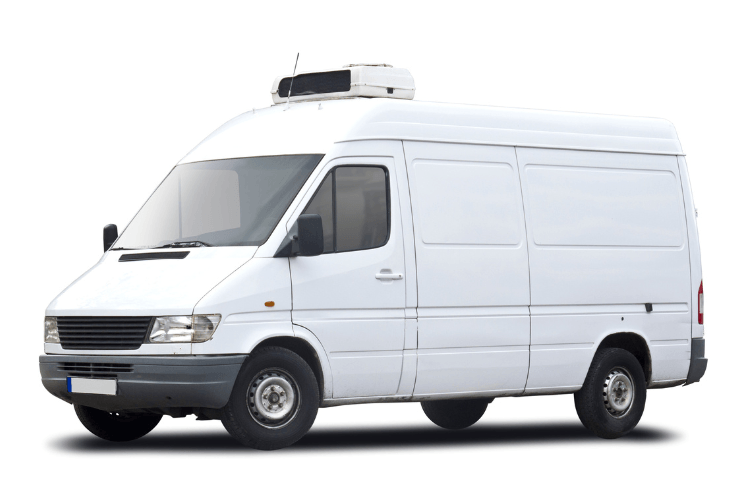The humble van plays a critical role in our economy, helping to ensure goods and produce are delivered on time - whether to businesses or private homes.
Vans also are also invaluable for transporting passengers - whether commercially or privately.
But if you're in the market for a new or used van, the many types of van can be daunting.
A key factor is size/capacity: your van needs to be able to carry certain items.
For instance, a small van would be near useless for transporting fridges and washing machines but might be perfect for delivering organic fruit and veg boxes.
Equally, if you're operating in a rural area, a LWB (long wheelbase) van might not be suitable for narrow lanes or where manoeuvrability is tricky.
For more advice on choosing the right van for you, take a look at our top tips for choosing a van.

Here we look at the different types of vans.
Do I need a special licence to drive the following vans?
Because you regular car licence allows you drive to vans weighing up to 3,500kg, you are permitted to drive the following vehicles. Any vehicle above that weight will require an upgraded licence.
The same goes if you to transport more than nine passengers at a time (You'll need a Passenger Carrying Vehicle (PCV) licence).
Small vans
As the name suggests, small/short wheelbase vans have more limited storage capacity. However, they are easier to manoeuvre and will be more fuel efficient than a larger van.
The Citroen Berlingo is a great example of a short wheelbase van.
What is a panel van?
'Panel vans' are generally synonymous with small vans.
The storage area is usually windowless, which enhances security. But since the roof curves at the top, they are less useful for large/bulky items.
They are however ideal for lighter, smaller loads, and are available with different roof heights.
Additionally, there are many of them so you can pick one up for a good price.
What is a car-derived van?
A car derived van is simply one whose initial design was that of a car, but which has been modified by the manufacturer to offer the storage capacity of a van.
Since they are based on cars, they tend to be smaller, but generally have the ride comfort and manoeuvrability of a car.
Thanks to their size, parking and negotiating narrow roads is much easier compared to a ‘proper’ van.
Medium vans
Examples of medium vans include the Ford Transit Custom and campervans such as the Volkswagen Transporter.
They have more capacity than smaller vans, but often without any loss of ride comfort.
Parking a medium van is relatively straightforward - in contrast to a large van.
Luton van
So-called 'Luton' (or 'box') vans are synonymous with large vans.
The term 'Luton' is derived for the Bedfordshire town where the Bedford commercial vehicle plant was located. The site is still used to make vans for marques including Citroën, Opel, Peugeot and Vauxhall.
Long wheelbase (LWB) vans offer a good level of comfort due to the distance between axles.
Large vans are the biggest vehicles you can drive on a standard UK licence.

Large vans
As mentioned, ‘Luton’ and ‘box van’ are used interchangeably with large vans. It has the classic configuration of drivers cab and separate high-roofed storage area accessed from the rear.
Large vans are ideal for transporting larger, heavier goods - and are firm favourites among couriers and delivery drivers.
They are often fitted with lifts, since most are raised off the ground.
An example of a larger Luton-style van is the Peugeot Boxer.
What is a box van?
Large vans are sometimes referred to as box vans.
They are synonymous with the Luton van (see above).
Pick-up vans/4x4s
While Pick-ups may not seem like 'vans', they do in fact fit most definitions of the vehicle type - the flatbed storage area in the rear being a defining element.
While pickups are hugely popular in North America and Southeast Asia, they are not so desirable in the UK; the larger wheelbase makes them tricky to manoeuvre on narrow British roads, and the uncovered, open-air rear is a drawback given the nation's inclement weather.
However, they are fun to drive offer an excellent view of the road.
Combi/crew vans
Combi or crew vans offer high levels of versatility, chiefly because many models have stowable seats so they can transform from passenger to cargo vehicles in a matter of minutes.
The combi (sometimes called kombi) is a halfway house between a regular panel van and a minibus/van based MPV.
The Renault Traffic is an example of a combi/crew van.
Minibus/MPV
To qualify as a minibus or MPV the vehicle in question will have up to seven seats, of which two should be stowable for cargo.
Space and comfort are also key elements of the minibus or MPV, which are ideal for large families, or private hire taxi firms.
Examples include the VW Caravelle.

Refrigerated vans
A range of delivery businesses use refrigerated vans to keep items at a particular temperature, including food and medication delivery firms.
Many refrigerated vans have compartments with different temperature levels – such as frozen, chilled and ambient.
Refrigerated vans can be any size – and are simply regular vans that have been converted.
Converted campervans
It's possible to convert a van such as a Vauxhall Vivero or VW Transporter into a campervan.
Many Brits undertake conversions themselves, adding everything from solar panels to toilets to Wi-Fi connections.
Tipper / dropside van
The tipper may not be immediately associated with the word 'van', but due to its cargo transporting capacity it fits most van definitions.
A tipper is designed to tip its cargo to the rear, or in the case of the Ford Transit Dropside, the sides and the rear.
Vans: Different fuel types
Unsure whether a petrol or diesel van is right for you? Is an EV van the right choice for you?
We take a look at the pros and cons of electric vs diesel vs petrol vans.
Whatever van model or fuel type you choose, we have some top tips for keeping your van secure.




